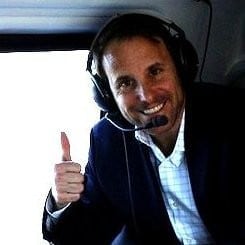So right now is both good times in SaaS (IPOs are back, revenue growth at leaders in decent) and tougher times in SaaS (markets still down 50%, multiples are low). One thing is clear — fundraising is harder right now than it used to be, at least for 90% of us.
And what that means is a number of you that raised a round will need a little more. An extension. A second seed. Or a bridge from your existing investors. Or at least, a significant second check from your lead investors even if you find a new investor to lead the next round.
Always assume no one else funds you again
Always
— Jason ✨Be Kind✨ Lemkin 🇮🇱 (@jasonlk) January 7, 2020
A bit more on bridge rounds here:
But in this post, let’s talk about a niche topic most founders know nothing about, but that matters — VC “Reserves”.
What are Reserves? Reserves are an amount of each fund that the VC firm holds back for second and third checks. These reserves are used both to bridge startups that are doing OK but need a little more cash. And to double and triple down on the winners. In fact, since reserves are capped, each portfolio company sort of competes for them. And overall, the need to bridge ones that need a little more competes with the desire to double down on the big winners, where all the real money is made:
OK, there’s a lot there, but before we even get there — Do Your Investors Even Have Reserves?
Let’s break it down a bit:
- $200m-$1B+ Funds will often earmark 40%-60% of the fund for reserves.
- $50m-$200m Funds will often earmark 30%-40% of the fund for reserves.
- Tiny funds will often earmark some for reserves — but really only for their winners. They rarely earmark much, if any, for ones that need a bridge.
- Angels almost never carry any reserves per se. But they do sometimes double down on winners.
- And importantly — very importantly. Almost no one really carries reserves for SAFEs and Note rounds. No matter how big the fund.
- And finally — note that the older the fund, the more reserves are invested, and thus used up. A fund that is more than 6-8 years old may not have many reserves left at all.
Ar SaaStr Fund we do a roughly 50:50 model. Half of each fund is for new checks, and the other half is for follow-on checks. And of the follow-on, maybe 20% are for bridge rounds, the rest for “hot” rounds with a new outside lead. And importantly, I mentally cap any bridge round at about 20% of the check size of the initial investment.
So just bear in mind that first, almost no one will want to write a second check if you truly are failing. But if you are in the middle, if you are doing OK but not quite well enough to earn the next round yet … some of your VCs will be able to use their reserves to bridge you.
But reserves are concentrated in the largest of funds, with the largest ownership stakes. And rarely there for SAFEs.
And if you don’t have a lead investor — there probably is no one really holding reserves. Not really.
More on Lead Investors here:

